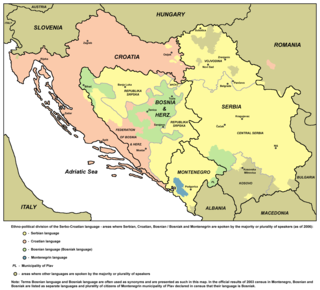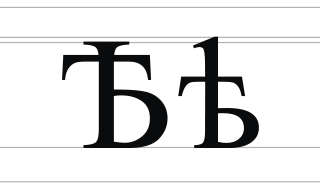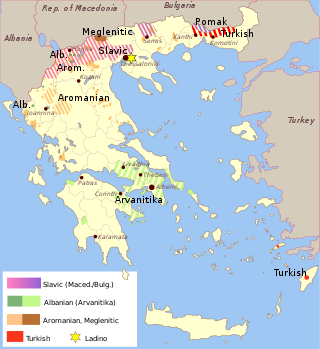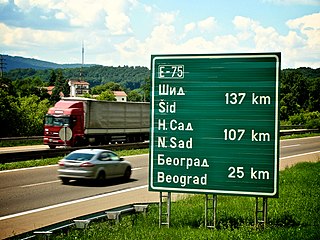This article needs additional citations for verification .(October 2012) |
This article appears to be a dictionary definition .(May 2023) |
Greek influence was widespread throughout the Balkans during the Middle Ages, influencing the languages within it, including Serbo-Croatian. Many words of Greek origin were borrowed from other languages, while most others came via contact with the Greeks. Some words are present and common in the modern vernaculars of Serbo-Croatian: hiljada (хиљада), tiganj (тигањ), patos (патос). Almost every word of the Serbian Orthodox ceremonies are of Greek origin: parastos (парастос).
- AG stands for Ancient Greek origin.
- MG stands for Modern Greek origin.
- C stands for Cyrillic (script).
- L stands for Latin (script).
| Serbo-Croatian (L) | Serbo-Croatian (C) | Greek (L) | Greek | English meaning | Notes |
|---|---|---|---|---|---|
| afrodizijak | афродизијак | áfrodisiakós | ἀφροδισιακός | aphrodisiac | AG |
| azot | азот | ázōtos | ἀζωτος | Nitrogen | via French ← Latin ← AG (coined in French, based on AG) Synonym (in Croatian dialects) = dušik |
| bar | бар | varós | βάρος | bar (unit of pressure) | AG |
| biber | бибер | piperiá | πιπεριά | pepper | via Turkish; Synonym (in Croatian dialects) = papar |
| crkva | црква | kyriakón | κυριακόν | church | via Proto-Slavic ← Old High German ← AG |
| cvekla | цвекла | red beet | Proto-Slavic ← Medieval Greek ← AG; Synonym (in Croatian dialects) = cikla | ||
| čempres | чемпрес | kypárissos | κυπάρισσος | cypress | via Dalmatian ← Latin |
| ćuprija | ћуприја | géfyra | γέφυρα | bridge | via Turkish Synonym = most |
| delfin | делфин | delphís | δελφίς | dolphin | via Latin ← AG |
| drum | друм | drómos | δρόμος | road Synonym (in Croatian dialects) = cesta; (in all Serbo-Croatian dialects) = put | |
| dupin | дупин | delphís | δελφίς | dolphin | via Dalmatian ← Latin ← AG |
| đak | ђак | diákos | διάκος | student, pupil | via Medieval Latin |
| đakon | ђакон | diákonos | διάκονος | deacon | via Medieval Latin |
| đubre | ђубре | kópros | κόπρος | garbage, trash; manure; bad and immoral person | via Ottoman Turkish ← AG Synonym (in all Serbo-Croatian dialects) = smeće |
| efendija | ефендија | afthéntis | αὐθέντης | effendi | via Ottoman Turkish |
| episkop | епископ | épískopos | ἐπίσκοπος | bishop | AG Synonym (in Croatian dialects) = biskup |
| etika | етика | ḗthikós | ἠθικός | ethics | AG |
| etnika | етника | éthnikós | ἐθνικός | ethnic group (people, nation) | |
| fazan | фазан | phasianós | φασιανός | pheasant | via German ← Latin ← AG |
| feniks | феникс | phoȋniks | φοῖνιξ | phoenix | AG |
| gitara | гитара | kithára | κιθάρα | guitar | via Spanish ← AG |
| guma | гума | kómmi | κόμμι | rubber | via Latin ← AG, originally Egyptian |
| haos | хаос | kháos | χάος | chaos | AG; Synonym (in Croatian dialects) = kaos |
| hartija | хартија | khartí | χαρτί | paper | Synonym (in all Serbo-Croatian dialects) = papir |
| hiljada | хиљада | khiliás | χιλιάς | [a] thousand (1000) | AG; Synonym (in Croatian dialects) = tisuća |
| hlor | хлор | χλωρός | khlōrós | chlorine | AG; Synonym (in Croatian dialects) = klor |
| hor | хор | khorós | χορός | chorus, choir | Synonym (in Croatian dialects) = kor |
| idiot | идиот | idiṓtēs | ἰδιώτης | idiot | via Latin ← AG |
| ikona | икона | eikóna | εικόνα | icon | |
| ironija | иронија | eírōneía | ειρωνεία | irony | AG |
| istorija | историја | istoría | ἱστορία | history | AG; Bosnian form of historija is derived from the Latin historia; in standard Croatian, historija denotes the academic study of history, while preferring povijest for history as a past reality. Ekavian form povest is seldom used in Serbia. |
| kada | када | kádos | κάδος | bathtub | via Latin ← AG |
| kalem | калем | kálamos | κάλαμος | reel | via Turkish ← Arabic ← AG |
| kamin | камин | káminos | κάμινος | hearth, fireplace | via Latin ← AG |
| keramika | керамика | keramikós | κεραμικός | ceramics | AG |
| kesten | кестен | kástana | κάστανα | chestnut | via Turkish ← AG |
| kit | кит | kȇtos | κῆτος | Whale | AG |
| klisura | клисура | kleisoúra | κλεισούρα | gorge | Medieval Greek |
| komad | комад | kommátion | κομμάτιον | piece, part, parcel, fragment | AG |
| kopito | копито | kopto | hoof | ||
| kreda | креда | Krḗtē | Κρήτη | chalk, Cretaceous | via Latin ← AG |
| krevet | крeвет | kreváti (MG) / krábbatos (AG) | κρεβάτι (MG) / κράββατος (AG) | bed | via Ottoman Turkish ← MG ← AG |
| kutija | кутија | koutí | κουτί | box | via Ottoman Turkish ← AG |
| livada | ливада | livádi | λιβάδι | meadow | MG |
| mana | мана | mánna | μάννα | manna | via Latin ← AG, originally Hebrew |
| manastir | манастир | monastḗrion | μοναστήριον | monastery, cloister | via Latin ← AG; Synonym (in Croatian dialects) = samostan |
| melodija | мелодија | melōidía | μελῳδία | melody | via Latin ← AG |
| miris | мирис | mýron | μύρον | smell | AG |
| mirodija | миродија | myrodiá | μυρωδιά | aromatic spice | MG |
| mit | мит | mŷthos | μῦθος | myth | AG |
| muzej | музеј | Μουσεῖον | Mouseîon | museum | via Latin ← AG |
| nafta | нафта | náphtha | νάφθα | petroleum, diesel fuel (slang) | via Latin ← AG |
| okean | океан | ṓkeanós | ὠκεανός | ocean | via Latin ← AG; Synonym (in Croatian dialects) = ocean |
| orgazam | оргазам | orgasmós | οργασμός | orgasm | via Latin ← AG |
| orgija | оргија | órgia | ὄργια | orgy | AG |
| papa | папа | papás | παπάς | Pope | via Latin ← AG |
| patos | патос | pátos | πάτος | floor | AG; Synonym (in all Serbo-Croatian dialects) = pod |
| pâtos | па̂тос | páthos | πάθος | pathos | AG |
| paranoja | параноја | paránoia | παράνοια | paranoia | via Neo-Latin ← AG |
| parastos | парастос | parástasis | παράστασις | dirge | |
| pasulj | пасуљ | fasóli (MG) / phásēlos (AG) | φασόλι (MG) / φάσηλος (AG) | bean | via Hungarian ← MG ← AG; Synonym (in Croatian dialects) = grah |
| pauza | пауза | paûsis | παῦσις | pause | via German ← Latin ← AG |
| pita | пита | píta | πίτα | pie, pita | via Turkish ← Medieval Greek |
| plastika | пластика | plastikós | πλαστικός | plastic | via Latin |
| pleroma | плерома | plḗrōma | πλήρωμα | Pleroma | AG |
| pop | поп | papás | παπάς | priest | via Proto-Slavic ← Old German German ← AG |
| praksa | пракса | prȃksis | πρᾶξις | usage, use, practice, profession | AG |
| putir | путир | potḗr | ποτήρ | chalice | AG; Synonym (in Croatian dialects) = kalež |
| sfera | сфера | sphaĩra | σφαῖρα | sphere | AG |
| sidro | сидро | sídiros | σίδηρος | anchor | |
| sistem | систем | sýstema | σύστημα | system | AG |
| skandal | скандал | skándalon | σκάνδαλον | scandal | via German ← Latin ← AG |
| stadion | стадион | stádion | στάδιον | stadium, stadion | AG |
| subota | субота | sávvaton | σάββατον | Saturday | via Latin ← AG, originally Hebrew |
| sulundar | сулундар | sōlēnárion | σωληνάριον | stove-pipe | via Turkish ← MG ← AG |
| talas | талас | thálassa | θάλασσα | wind wave | via Turkish ← AG; Synonym (in western Serbo-Croatian dialects) = val |
| talenat | таленат | tálanton | τάλαντον | talent | AG; |
| tehnika | техника | tekhnikós | τεχνικός | technique, technology | AG |
| tiganj | тигањ | tigáni | τηγάνι | pan (saucepan) | via Turkish |
| tip | тип | týpos | τύπος | type | AG |












